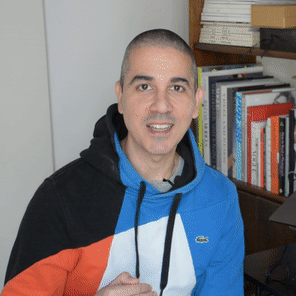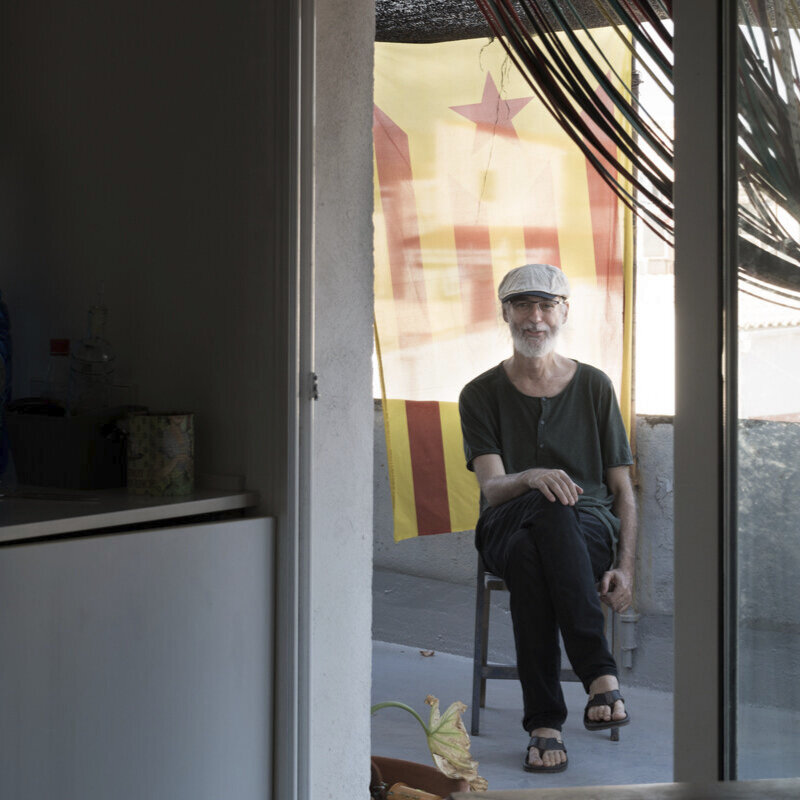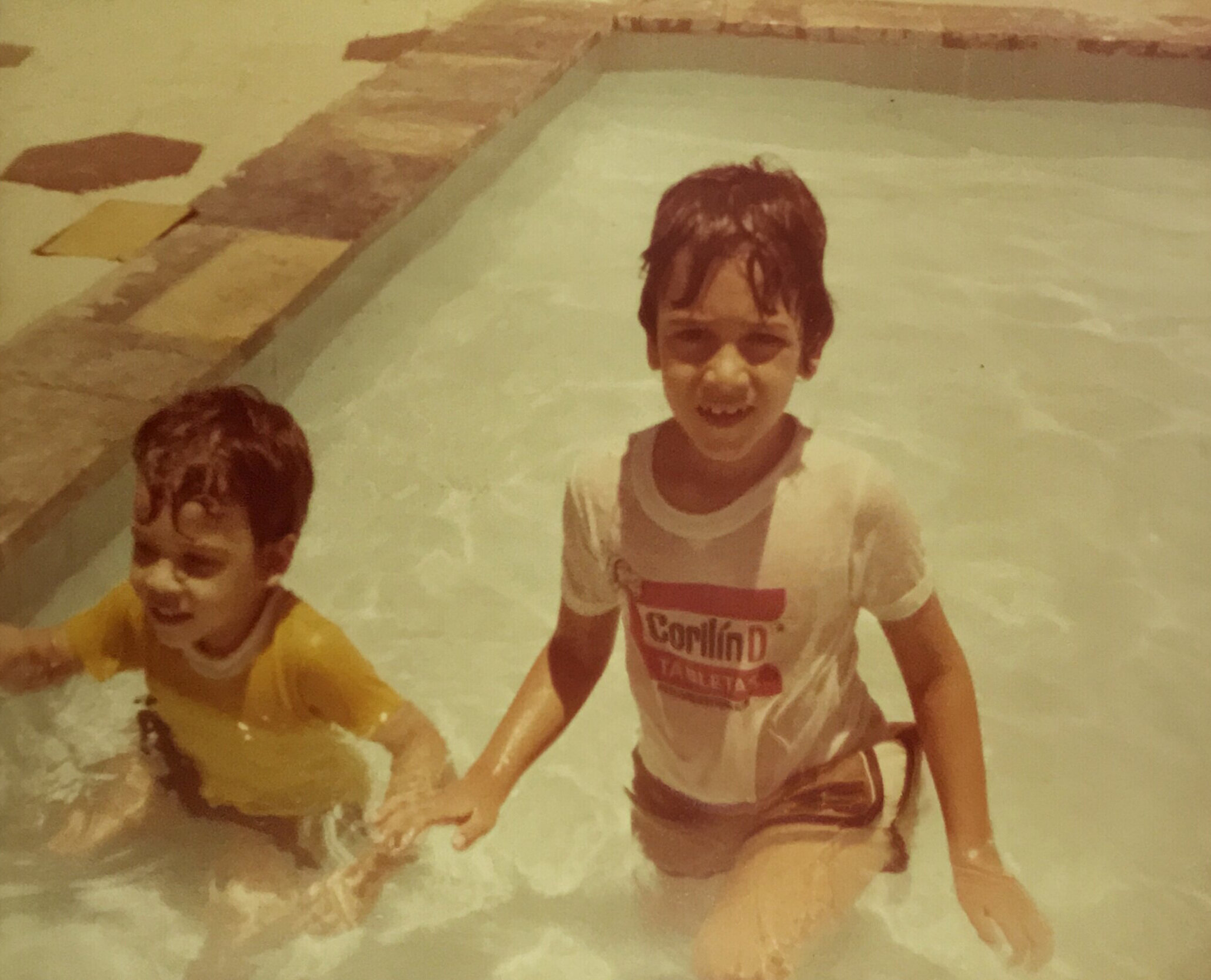This is the nineteenth post in my series of posts where I speak with people in the creative industries and ask them questions about the things that “I Wish I Had Known” when I started out as a creative myself.
When you speak to Sabinna Rachimova, founder of the fashion brand SABINNA, her calming presence and her wealth of knowledge and expertise are the perfect combination for a very educational conversation!
We had a lovely chat about sustainability and ethics in the Fashion industry and how she is contributing to shaping the new generation of people coming into the industry:
1. I’ve known you for years, since the days of your first shows at Fashion Scout during London Fashion Week. These days, you are not doing catwalks anymore and, instead, you present your collections at your own pace. How has your brand changed throughout the years and what lessons have you learnt?
This is a very good question! We changed a lot of things in the last 5 years and we keep adjusting our business concept, always listening to the demand of our customers as well as keeping in mind how our industry evolves.
We want to lead the change and be part of it rather than follow existing trends and concepts. I think change can sometimes feel like betraying your values but that's actually not the case. It's the opposite - our values and the vision that we stand for were the main reasons we rethought the way we showcase, the way we communicate with the customer and the way we want to shape this industry in the long term.
Being a pioneer is never easy but it's important and worth the effort.
2. Before starting your brand in 2016, you made a long journey from studying Slavonic languages in Austria to coming to London to study at Central Saint Martins, and later interning for Dior and Mary Katrantzou. These are opportunities that you created for yourself, but still, not everyone has access to them for geographic or economic reasons. Looking back, do you think the brand Sabinna would exist if you hadn’t followed this path and, if so, how different would it be?
It's very important to be aware of the privileges you have in life. I was born in a little place that back then was still part of the USSR. My parents worked really hard so that we could move to Europe and my sisters and I could have a better life. I am incredibly lucky that my parents gave me this opportunity.
The fact that I got to grow up in a safe environment, to get access to free education, to have the opportunity to apply for university gave me a headstart compared to a lot of other young people who are not that lucky - and I'm very aware of that privilege and never take it for granted.
It's difficult to say what life would look like today if we would have stayed in my place of birth. But what I know for sure is that I am always ready to give 100% and take every chance I get to grow, learn and take the next professional step. I owe it to my parents and I owe it to myself.
3. There is this misconception that if you study Fashion at uni, your goal should be to become a fashion designer even if there are so many other roles that are just as important to keep the industry running. Do you think that there should be more resources for people coming into the industry or perhaps expectations should be better managed by the academic institutions?
I totally agree with you! Everyone I met during my studies wanted to become a fashion designer. There is still a lack of understanding of the industry while studying. There should be more interaction between academia and the industry, this would help to manage expectations and give a more realistic picture of how the industry actually works. Internship and gap years are a great start but not enough.
4. You have said in the past that you don’t consider yourself a fashion designer…
it is true! I don't see myself as a fashion designer. When you run a fashion brand, design is only a small part of your daily tasks. A lot of it is logistics, management, leadership, trying to find balance in everything you do and of course product development.
Don't get me wrong - I am not saying that design is not important - I just feel that the term fashion designer doesn't describe my job accurately.
5. You are a woman who designs for women. One would presume that this fact would have you part of the success guaranteed in your career. Yet, most of the biggest names in Fashion design history are of men designing for women. Is this historic lack of representation still an issue today?
70% of the workforce in fashion is female, yet less than 25% are in leadership positions. There are way more male founders than female founders. This has many reasons and one of them is the patriarchal structure of the society that we live in and we see this problem across all industries. Leadership positions are often designed for men, women have it more difficult to progress in their careers, they get fewer opportunities and a large part of the society still has difficulties to see women in positions of power.
This is a very complex topic and there are many things on different levels that we can do. I see a lot of responsibility as a female founder to contribute to a shift in our industry. We need to get vocal about it and call out everyone in leadership positions and ask about inclusion and diversity within their companies.
7. The Fashion industry has been named as one of the biggest polluters on the planet, raising awareness of an issue that many small brands have been trying to tackle for years. Nowadays, it has become trendy to be sustainable to the point where you see many brands jumping on the sustainability wagon without really understanding what sustainability means. What does it mean for SABINNA?
The biggest problem is that everyone can define sustainability however it suits them - there are no rules, no regulations, a lot of space for greenwashing and this can get really frustrating. Sustainability became a buzzword and with it part of everyone's marketing strategy.
As an independent brand, we want to educate our customers but also learn from them by getting feedback. We need to start defining sustainability and call out brands that are making wrong claims for marketing reasons. Being sustainable is more than just using green materials or paying your workers properly.
Sustainability has to be part of your business concept. If your business model requires the production of tons of clothes every year then your business will never ever be sustainable. We need to rethink business models as a whole. Not only the processes that are part of it.
8. Our industry has also been called out over unethical practices many times, but things really escalated after the incident at Rana Plaza that cost the lives of so many people. When I’m asked how come I work in such an unethical industry, I always reply that I believe that change comes from within and that we are the ones trying to change the industry from the inside. How can the people working in the industry, and the new ones coming into it for the first time, contribute to making this a more ethical industry?
To everyone who is about to start a fashion business: If consciousness is not at the core of your business, then please don't do it. We don't need another brand making unnecessary products made out of plastic and produced in horrible conditions. This seems super harsh but I think we reached a point where it has become inevitable to understand the urgency when it comes to sustainable practices and an overall shift in this industry.
And for everyone who is already part of this industry: It's all a process and we are constantly learning new things. Stay informed, don't ignore innovation, introduce better practices, look out for each other, create a working environment where everyone feels heard and welcomed. And please pay everyone for their work. I can't urge enough that we have to stop offering free internships and expect people to work an unacceptable amount of hours.
9. And, speaking of ethics, being ethical and being sustainable are two very different things. Yet, many brands are using these two terms interchangeably. SABINNA, as a brand, explores sustainability aiming to create ethical fashion without compromising aesthetics. How do you achieve this balance?
I learned handcraft from my grandmother and the only way I knew fashion for many many years was through the eyes of a maker. I always had a lot of respect for handcraft and the ability to create such beauty with your very own hands.
When starting SABINNA, I wanted to focus on local production so I could be close to everyone who makes our clothes. I want to be part of this process, I want to see it and I want to constantly improve it whenever I learn new things. With everything we do, we make sure to always stay up to date on what the best solutions are and see how we as an independent brand can introduce them into our daily practices.
10. The industry has been going through economic hardship over the last few years, one that affects the high street in particular. How do you navigate fluctuating demands while still offering your community innovative and sustainable collections?
Nowadays, it's more important than ever to build a community that knows and appreciates your product for its quality and contribution to a better future. Being authentic, transparent and honest helped us a lot to build a great relationship with our customers.
We deeply care about everyone who shops with us and we always make sure to provide the best customer experience. For us, it's important to know our customers, to listen to them and to grow with them.
11. Our community is only as strong as its weakest link and this is something that you take very seriously. You lecture at the University of the Arts London where you teach your students about entrepreneurship and innovation in fashion. Why is it important for you to contribute to the new generation of people coming into the industry?
We have to see the bigger picture in everything we do. I have the amazing opportunity to share my experiences with the next generation of creatives and help them to avoid some of the mistakes that I have made.
Plus, let's not forget how much I get to learn from them! My students are really inspiring, fierce and have beautiful mindsets when it comes to rethinking the future of this industry. It always gives me hope and I see it as part of my job to connect the past, the present and the future of this industry in order to reshape it.
12. Finally, running a fashion brand these days is so much more than just selling clothes. How can people new to the industry prepare themselves better to understand the needs of the industry and its consumers?
That's a difficult question! I wasn't prepared at all when I started. I had no business background but a lot of passion and grit. And I strongly believe that there is no secret recipe of who will make it and who won't. It's super individual.
For me personally, it's a mix of understanding your privileges, luck, hard work, opportunities, network, blood, sweat, tears, grit, passion, flexible thinking, strong mindset and most importantly the ability to communicate what's on your mind.
I am beyond grateful, Sabinna, that you took some time out of your busy schedule to answer my questions. It’s everything that I Wish I Had Known!
You can learn more about SABINNA on her website https://www.sabinna.com/ or her Instagram @sabinna_com































